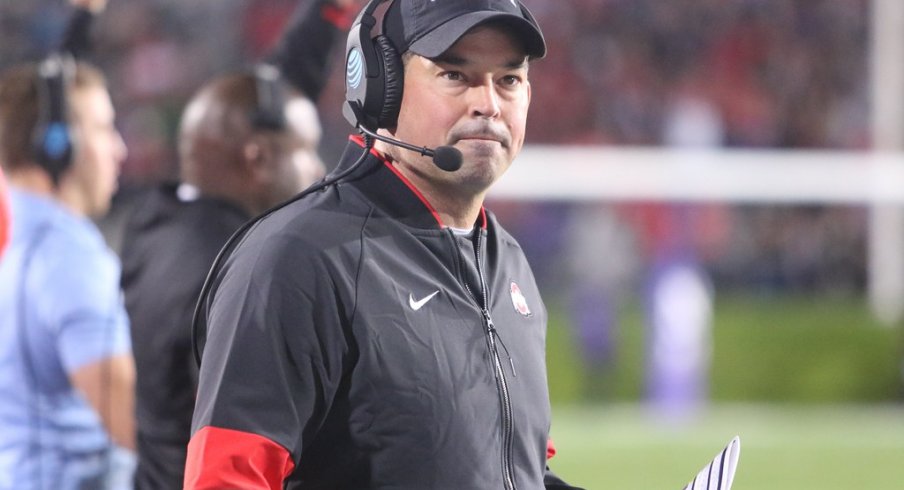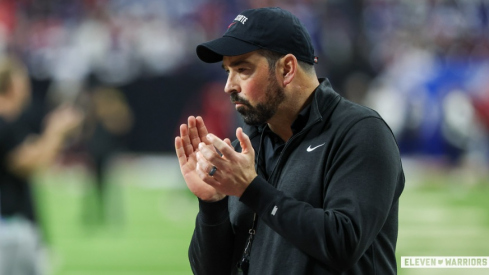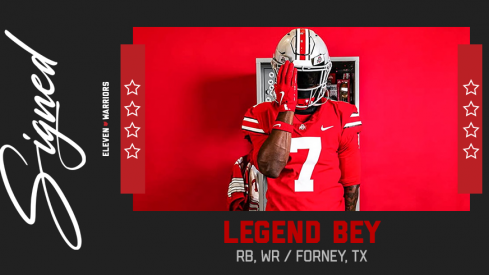Deuce Right Up Trade 61 Levels
It's 2nd & 8 as Ohio State prepares for just its third offensive snap of the 2020 season. After an inside handoff to Master Teague III gained little, Ryan Day went back to the air.
As he looked down at his play sheet on that sunny afternoon, he rattled off those nine syllables and watched a handful of graduate assistants and interns gyrate a barrage of signals as 11 players watched from their own 40-yard line. Roughly 15 seconds later, Garrett Wilson would streak across the field, snatching a Justin Fields pass out of the air for a 23-yard gain.
Six words, together incoherent to the untrained ear, led to the perfectly choreographed ballet we all witnessed. Even to those who played the sport in their youth, the words are meaningless, though surely some of you can identify a phrase here or there.
This fact isn't entirely surprising to the average football fan, however. As disciples of Bill Walsh spread the gospel of his West Coast Offense during the 90s and 2000s, NFL Films was more than happy to capture the ever-increasing size of the accompanying play-calls.
During the same era, however, this approach was much more difficult to implement outside of the professional level. While some programs kept trying to bring these pro principles to their playbooks, spread offenses were taking many others in the opposite direction, prioritizing speed over complexity.
Today, few programs employ such complex formulas, though it can still sound like Mandarin to outsiders. But just as Ohio State's nine 2021 early enrollees on the offensive side are learning as we speak, the verbiage is much easier to decipher when you understand the multiple elements involved.
Let's break them down:
Formation
Deuce Rt Up
As one might expect, the first part of a call is where everyone starts. There are dozens of formations in the Buckeye playbook, but they are organized with purpose.
Assuming the five offensive linemen and quarterback's alignments don't change, the naming conventions primarily denote the strength of the formation.
In our example, Deuce Rt, it means there are two receivers to the right. Since it's a one-back personnel grouping with two receivers to each side, the Rt (right) signals the side of the tight end.
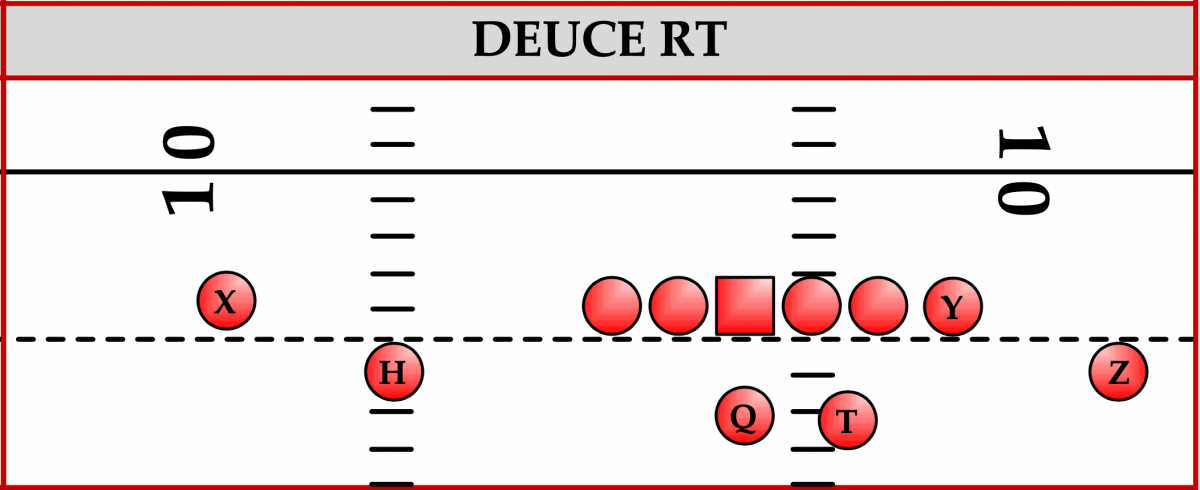
The Z receiver is often paired with the Tight End (Y) on the same side in these 2x2 sets, and the X and H receivers align accordingly. But as you may have noticed, the tight end on this play, Luke Farrell, isn't lined up parallel with the right tackle. Instead, he's a yard off the line of scrimmage.
Such adjustments are typical within the Buckeye playbook, allowing the tight ends to act as hybrid players that can easily work back across the formation, playing the role of a traditional fullback at times. Sometimes that means lining up behind the guard and tackle, or in this case, outside of the interior linemen.
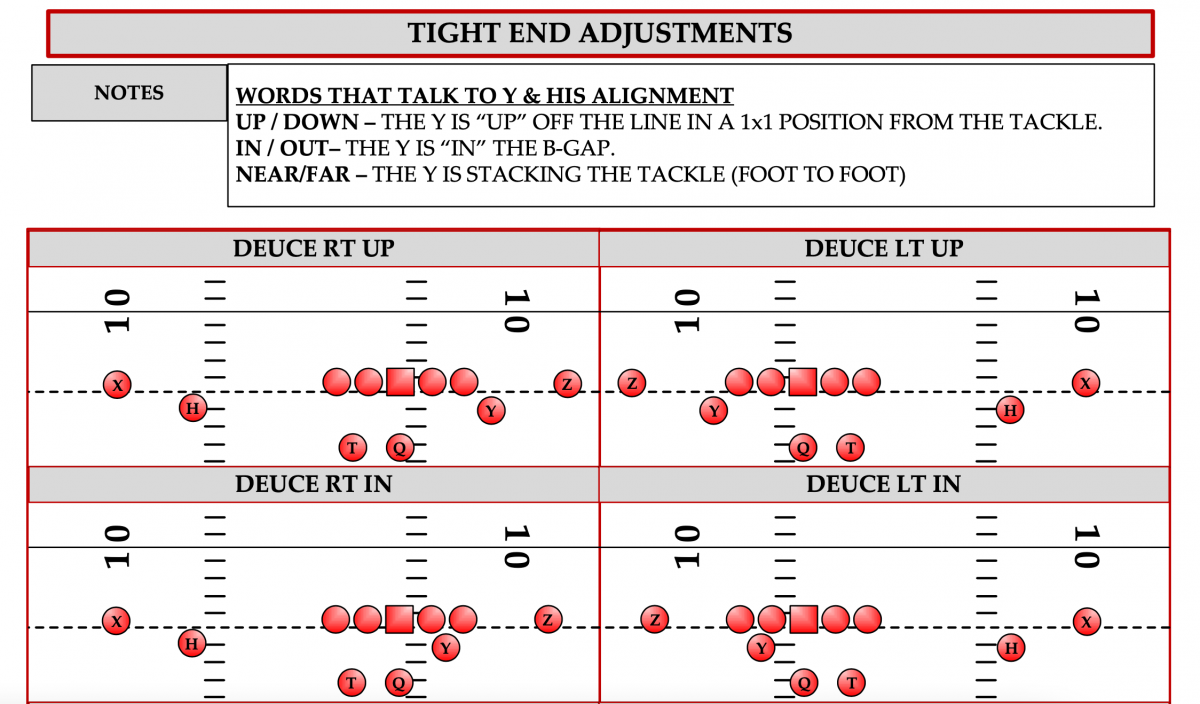
Motion
Trade
Though often overlooked by fans, Day calls for pre-snap motion with great frequency. Sometimes it's in the form of Jet motion, bringing a receiver across the formation at full speed as the ball is snapped, but many are simple window dressings to provide the QB with information about the defense's plans.
On this occasion, Day asked Farrell to shift from the left side of the right, looking to see how the Nebraska defense responded.

When all the Husker linebackers simply shuffled over a few steps, rather than seeing one individual defender follow Farrell, it was clear to everyone that the defense would be employing a zone coverage, alerting Fields to where he should look following the snap.
This motion, however, was unique within the Buckeye system. Most pre-snap movements begin in the called formation, then send the called receiver in a particular direction.
For instance, if Day wanted to line up in the same formation as we see here, but send the H (slot) receiver across the formation to create a 3x1 set to the right, the call would be Deuce Rt HAC (H + Across). If the Z receiver was needed to move in and create a tight bunch with the Y, the call would be Deuce Rt ZIN (Z-In).
With all the pre-snap shifting the team employs, there are roughly a dozen such calls in the OSU playbook. All of them utilize this method of naming convention, though.
Blocking Scheme
61
Perhaps the most important element of the entire sequence, the two or three numbers added in the middle tell not just the offensive line, but everyone in the huddle, what kind of play they're running.
Numbers have long signified assignments in this sport, but this isn't the same "2-back through the 5-hole" system you may remember from peewee ball. Each digit represents a different type of play that could be called.
The first digit in the sequence signals the series of play being called:
- 1 = Open-side run
- 9 = Closed-side run
- 8 = An insert run
- 5 = Five-man pass protection
- 6 = Six-man pass protection
- 7 = Seven-man pass protection
The second digit signals the style of play being called from that series:
- 0/1 = Direction of pass protection
- 2/3 = Tight Zone
- 4/5 = Mid Zone
- 6/7 = Gap Scheme (Ex: Counter)
- 8/9 = Outside Run
Occasionally, there may be a word added to the blocking scheme that defines more than just what the numbers can tell us, and give an added element of the play.
For instance, there are at least 11 different versions of the Tight Zone run alone. Adding Crunch to the call tells the tight end to come back across the formation and seal the backside edge opposite the rest of the blocking scheme.

On this occasion, the 61 signified a six-man protection scheme with the back staying in to block. The "1" signaled that the back and the left tackle would work together on one side while the remaining four linemen slid in the opposite direction, each filling a gap.
Against the Huskers' three-man front, that would look like this example of the same protection flipped to the opposite side.
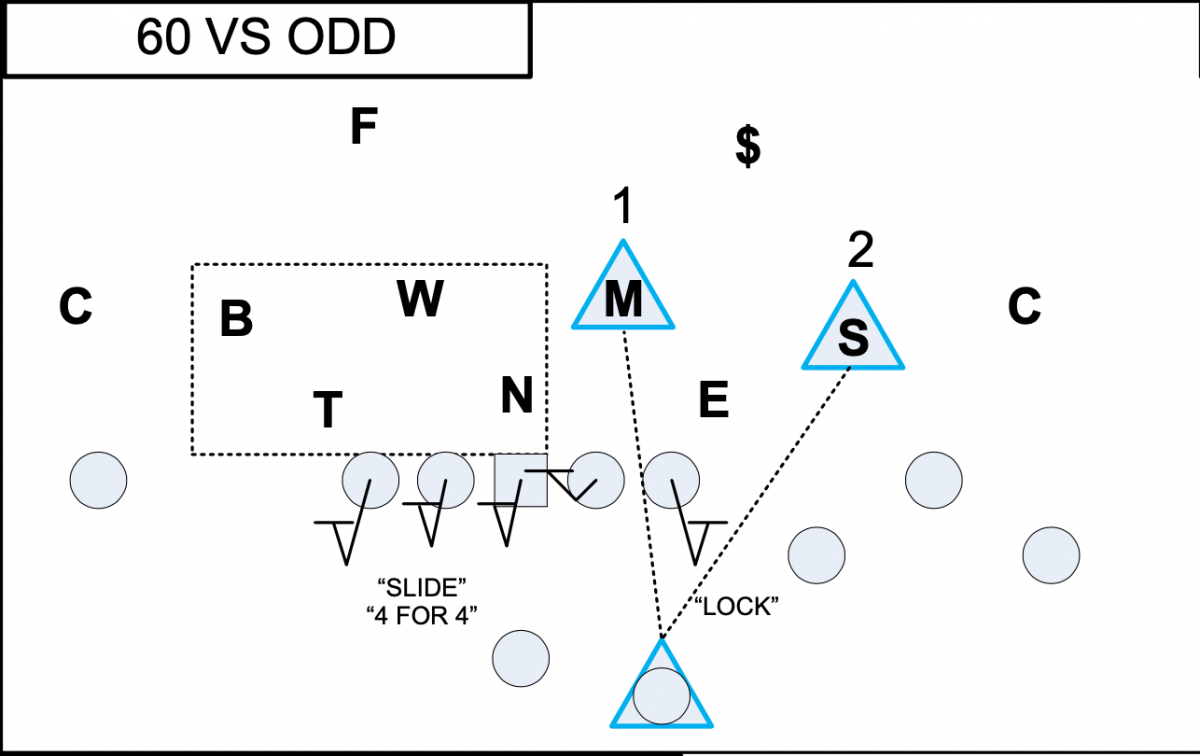
Had the call been 361, it would have signified to the blockers that this was a three-step drop for the quarterback, and they needed to be aggressive in making contact with their opponent to keep balls from being tipped at the line.
It could have also been 861, which doesn't change anything for the blocking scheme itself, it only signifies to the back that he should incorporate a play-fake with the QB before looking to pick up a rusher.
Concept
Levels
More than any other piece of the call, this element differentiates Ohio State's system from the one we heard from Gruden above. Since Urban Meyer took over in 2012, the program has employed the Erhardt-Perkins style, which buckets plays together as overall concepts.
Today, this system is one of four common languages we see at the college level. The West Coast system has quickly gone out of fashion, due to its elongated format which tags the primary receiver and asks the other players to remember their roles accordingly.
The Air Raid guys have gone the opposite way, simply numbering each concept. For instance, Mesh is simply 92.
Finally, there are the Air Coryell descendants, which use the numbers on the receiver's route tree to denote the play (Ex: 999 signifies three Go routes). While this offers numerous options and signals the receiver's responsibility right away, the downside is that it's really only designed for patterns with only three receivers. In the modern game, that rarely happens, meaning coaches have to add tags like "H-arrow" to the play-call, reducing its efficiency.
In the Erhardt-Perkins style, which came from the New England Patriots in the late 1970s, players learn a base concept and then adapt as needed. The concept can be called from virtually any formation or personnel group, and once the players know the concept, they can easily run it from many looks.
The Levels concept called on this play is a three-level read to one side of the field, with the middle level coming across the field. The QB looks deep-to-short, knowing he has a one-on-one matchup the opposite way should the defense overload his initial read.
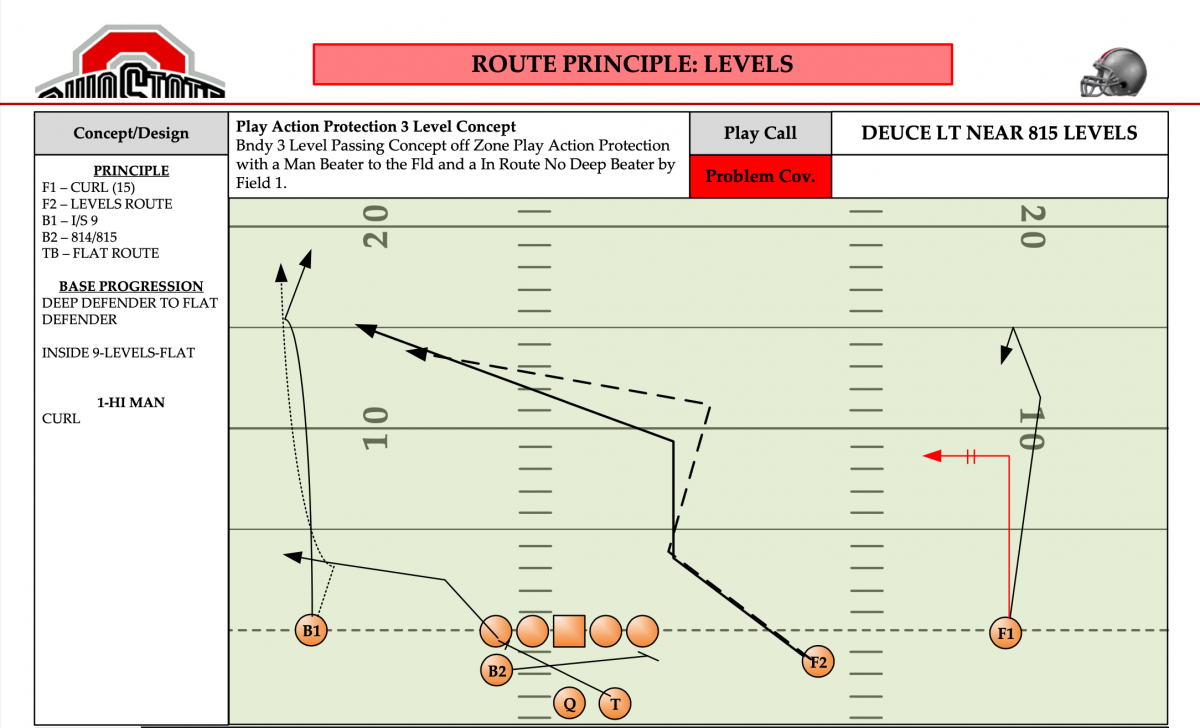
As we see in these two examples, the concept remains the same, even as the personnel group switched from one running back to two. That also changes who becomes the underneath pattern, which the blocking scheme helps to signify.
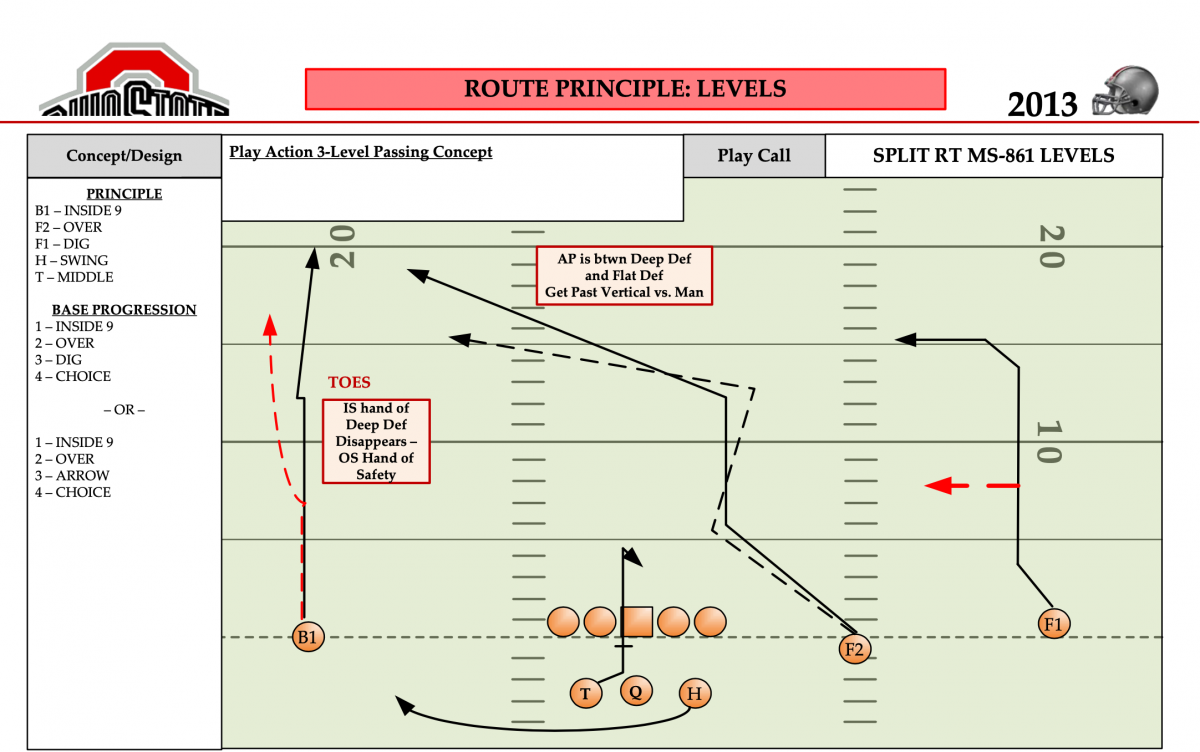
To the defense, this can feel like a totally different concept, due to the different action in the backfield. Yet to 9 of the 11 offensive players, including the quarterback, nothing changes.
While the concepts in this style of play-calling are easier to learn and memorize than some of the other systems, they are also easier to communicate. 'Levels' is simply one word that could be communicated by one hand signal or image on a board.
The downside to this approach is the wide variety of names each concept can have. Names like Snag, Sail, Flood, Dino, or Pin can mean different things to different coaches, and it's incumbent on new staff members to be the ones who adapt, rather than make an entire roster learn their language.
By all accounts, that's just what Ryan Day did upon his arrival in Columbus. While both of his mentors and most recent bosses, Urban Meyer and Chip Kelly, use many of the same concepts within their offenses, their playbooks feature very different verbiage. Spread, for instance, is the name Meyer gave to the same concept Kelly called Y-Over, which many others have called Saints.
Since his hiring in 2017, Day has kept the naming conventions consistent, making it easier for J.T. Barrett, Dwayne Haskins, and others to focus on more important things. When Justin Fields arrived on-campus in the early months of 2019, he picked up the same playbook and got started, leading us back to the play we started with.
Once again, the QB sends his tight end across the formation in a Trade motion and surveys the defense's response before the ball is ever snapped.
Post-snap, Fields looks first to the deep receiver running down the right sideline while the running back helping seal off the left side. As the corner follows that deep route in the defense's Cover 3 zone, Fields then looks for the underneath defender, who is latching on the Farrell in the flat, meaning the middle route should be open.
Fields then identifies Wilson as flies right past the middle linebacker, running right into an open space where he lofts the ball for a big gain with room to run after the catch.
Just like that, six words led to eleven players perfectly executing their roles and the offense picking up 23 yards. As soon as Wilson fell out of bounds and the whistle blew, it was time to do it all over again.
